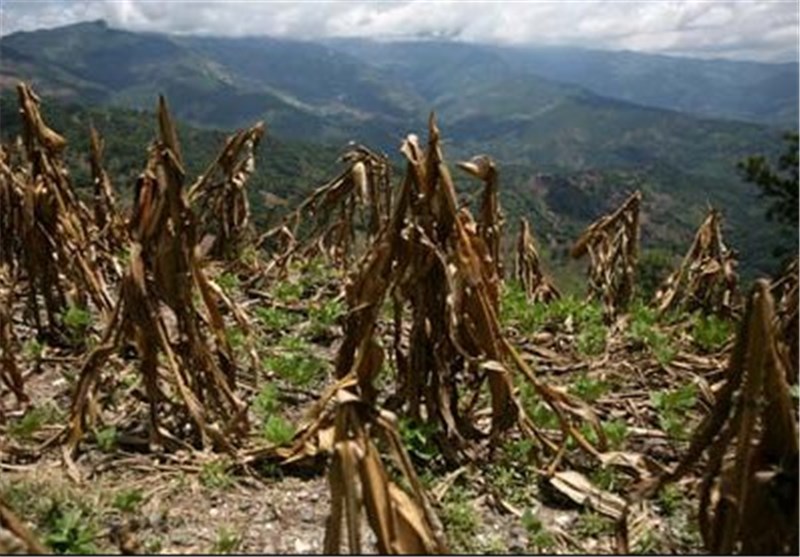Higher Temperatures, Pollution, Less Food
TEHRAN (Tasnim) – A new study revealed that interaction between increasing temperature and air pollution, specifically ozone pollution, can significantly damage crops.
Many studies have shown the potential for global climate change to cut food supplies. But these studies have, for the most part, ignored the interactions between increasing temperature and air pollution.
A new study involving researchers at MIT shows that these interactions can be quite significant, suggesting that policymakers need to take both warming and air pollution into account in addressing food security.
The study looked in detail at global production of four leading food crops -rice, wheat, corn, and soy- that account for more than half the calories humans consume worldwide. It predicts that effects will vary considerably from region to region, and that some of the crops are much more strongly affected by one or the other of the factors: For example, wheat is very sensitive to ozone exposure, while corn is much more adversely affected by heat.
The research was carried out by Colette Heald, an associate professor of civil and environmental engineering (CEE) at MIT, former CEE postdoc Amos Tai, and Maria van Martin at Colorado State University. Their work is described this week in the journal Nature Climate Change.
MIT associate professor Colette Heald explains that while it's known that both higher temperatures and ozone pollution can damage plants and reduce crop yields, "nobody has looked at these together." And while rising temperatures are widely discussed, the impact of air quality on crops is less recognized.
The effects are likely to vary widely by region, the study predicts. In the US, tougher air-quality regulations are expected to lead to a sharp decline in ozone pollution, mitigating its impact on crops. But in other regions, the outcome "will depend on domestic air-pollution policies," Heald said. "An air-quality cleanup would improve crop yields."
Overall, with all other factors being equal, warming may reduce crop yields globally by about 10 percent by 2050, the study found. But the effects of ozone pollution are more complex -some crops are more strongly affected by it than others- which suggests that pollution-control measures could play a major role in determining outcomes.
Ozone pollution can also be tricky to identify, Heald noted, because its damage can resemble other plant illnesses, producing flecks on leaves and discoloration.
Potential reductions in crop yields are worrisome: The world is expected to need about 50 percent more food by 2050, the authors said, due to population growth and changing dietary trends in the developing world. So any yield reductions come against a backdrop of an overall need to increase production significantly through improved crop selections and farming methods, as well as expansion of farmland.
While heat and ozone can each damage plants independently, the factors also interact. For example, warmer temperatures significantly increase production of ozone from the reactions, in sunlight, of volatile organic compounds and nitrogen oxides. Because of these interactions, the team found that 46 percent of damage to soybean crops that had previously been attributed to heat is actually caused by increased ozone.





